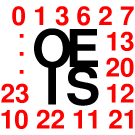A market basket is a bundle of economic goods. Since our aim here is to escape from market phenomena if possible, in this essay we’ll call it an inventory. Let’s use the term survivable inventory to refer to an inventory which is sufficient to the survival of a person. Ideally, we can individualize this, not assuming some standardized person as with hedonic indexing along the line of “poverty line” calculations. But our motivations in identifying survivable inventories are very much similar to those behind the “poverty line” concept. Basically the idea is to classify economic goods as luxuries or necessities, but with certain subtleties accounted for. We can speak of an inventory as survivable for a given person. The same inventory may not be survivable for another, due to medical or other special needs. We would expect all survivable inventories to include food, and almost all to include housing, clothing, and some medical products and services. The food portion should supply all essential nutrients in sufficient amounts. This raises the question of inventories that are technically survivable, but not without consequences that affect long term survivability (life expectancy). The choice of a standard of survivability should allow some flexibility. Given a true post-scarcity state of affairs, it would literally be a non-issue, while a condition of extreme hardship such as a famine might justify settling for a compromised understanding of survivability, at least for adults. This is of course not an exact science, but there may be reason to invest some effort in surveying the boundary between viable and non-viable provisions.
Now let’s extend the idea that an inventory is survivable for one person, to asking whether it is survivable for two persons. It is a question of whether it can be partitioned in a way in which each partition is survivable for one of the persons. Likewise for three or more persons. Now let’s take a big leap and assume that information about all assets in existence is public knowledge. We will refer to this condition as extreme transparency, and refer to the combined inventory as the common wealth. By the way, it is not intended necessarily to imply common ownership of this common wealth; only public knowledge of its contents. While enforced disclosure of asset holdings is abhorrent to anarchists, it is encouraging to see that unauthorized actions have probably advanced the cause of transparency more than have those of the authorities. More importantly, we can perhaps establish a community of persons as (perhaps among other things) an informational cooperative.
Using the survivability criteria established above, we consider the question of what is the largest fraction of the population for whom survivable inventories can be partitioned out of the common wealth. Negative utilitarianism (basically the least bad for the least number) suggests we adopt maximization of the survivability percentage as a shared goal. A second goal might be minimization of nonrenewable inputs in the creation of common wealth. Additional goals can of course be piled on, but these two seem to make sense for early stages in the project. Anagorist ideals suggest calculating the coordination by playing a unicoalitional cooperative population game of perfect information. Under agorism it would be multicoalitional, under anarcho-capitalism most likely with imperfect information (with the shared goal of survivability maximization not shared universally, perhaps?), and maybe the “tragedy of the commons” people would make it a noncooperative game. The question of whether a whole population (even a small population) can agree on a shared goal stated in terms of negative utilitarianism is one question. The question of whether the solution can be effectively pursued noncompetitively is closely related to the question of whether anagorism is workable.

Leave a Reply